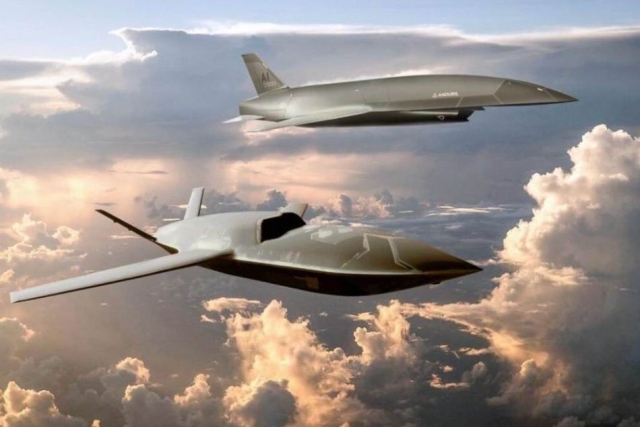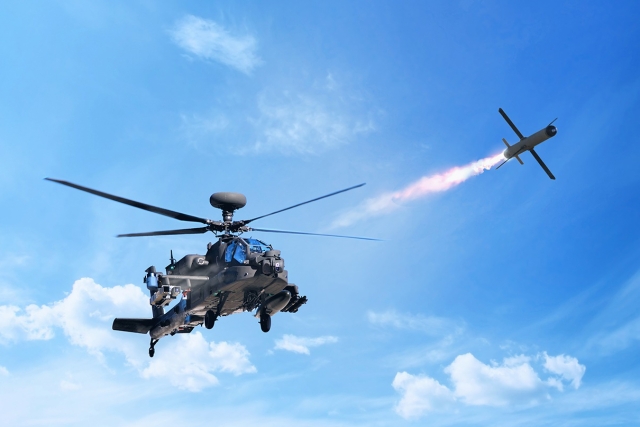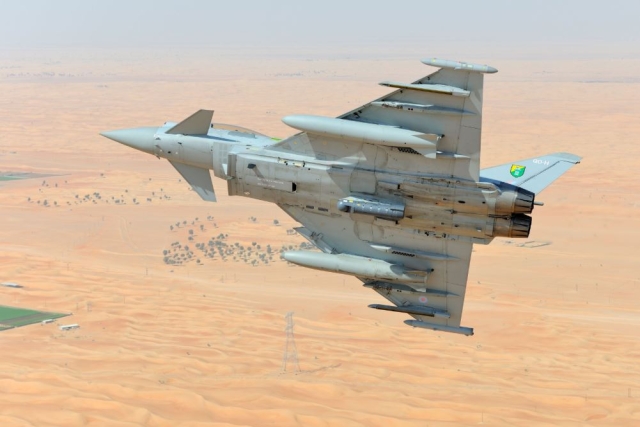Unconventional Military Hardware from Iran
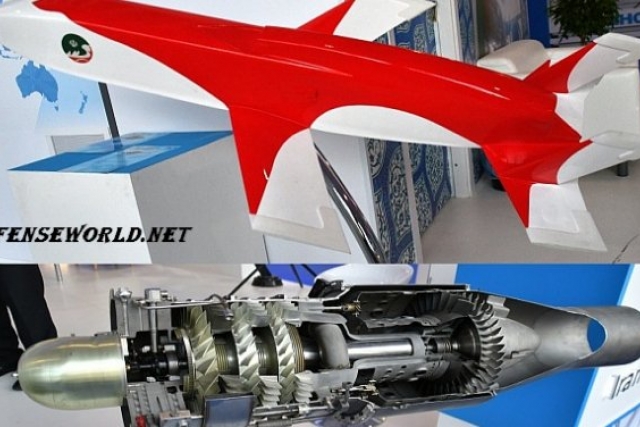
Iran's 'Mobin' Stealth Attack Drone with TOLOO engine
Sanctions-hit Iran has found ingenious ways to develop military hardware. In the past few years Tehran has developed weapons that have caught the world’s attention with their unique designs, simplicity and functions.
It has used some of these weapons in Syria and Iraq where western analysts have been surprised at their effectiveness. Defenseworld.net looks into some of Iran’s recent innovative military hardware.
Mobin Jet-powered Stealth Drone
Tehran displayed Mobin jet-powered stealth drone at the MAKS-2019 Airshow in Russia. In the drone attack against Saudi oil fields in mid-September, Yemen's Army spokesman, Brigadier General Yahya Saree said that the Yemeni Houti Army used home-grown drones with a new type of engine, “something between a regular and jet engine,” a claim not tenable going by the distance travelled and the precision strike achieved.
The distance between Yemeni border to Buqyaq Saudi oil facility is around 800km while that from Iran is around 300-350km, well within the 450km range of Mobin.
Tehran calls the “Mobin” a “drone,” but a marketing handout about the “Mobin” describes it as a “cruise missile.” Its key features, according to the handout are- Stealth radar cross signature of less than 0.1M2, mid-course guidance (which will help it avoid large obstacles) and terminal phase guidance (to guide it to the target).
The Iranian drone/cruise missile has a wide service ceiling (flight altitude) of 30-45000 ft, range of 450 km, speed of 900km/h, weight of 670 kg and a payload of 120 kg.
Along with the drone, a life-size mode of the “Toloo-4” turbojet engine designed to fit into the Mobin drone was showcased at the Russian event. An information handout described the engine as a single shaft turbojet engine which consists of 3 stage axial compressor, direct annular combustion chamber and 1 stage axial turbine. It weighs 55.9 kg with a diameter of 330mm and length of 1130mm-1330mm.
The engine thrust is rated at 345daN with an engine speed of 28500RPM. Its hydro-pneumatic life is rated at 20 hours.
Bavar-373 Air Defense System
Tehran made public another air defense system, the Bavar-373, in August of this year.
According to reports, the Bavar-373 was developed after Iran failed to acquire S-300 systems from Russia owing to UN Security Council’s resolution banning the sale of advanced weapons to the country.
A Russian aviation publication Avia.Pro claims that the Iranian system is “superior” to the S-300.
“Its number is between 300 and 400. It's 373. In any case, his system is stronger than the S-300 and very close to the S-400,” Iranian President Hassan Rouhani said, during its unveiling.
“The Iranian Bavar-373 radars can detect air targets (aircraft, cruise and ballistic missiles, drones) at distances of up to 300km. According to unconfirmed data, the radar is also capable of detecting stealth aircraft, which makes it an effective means of combating F-22 and F-35 fighters, which, incidentally, were recently discovered near the Iranian borders,” the Russian publication noted, in August.
A distinguishing feature of Bavar-373 is its vertical launching system with square launchers, mostly used for air defense on warships.
The “S-300 clone” is designed to intercept and destroy incoming hostile targets flying at altitudes of up to 65 kilometers. The system employs missiles that have a maximum range of 300 kilometers.
The long-range defense system is capable of detecting up to 100 targets simultaneously and engages six targets at a time.
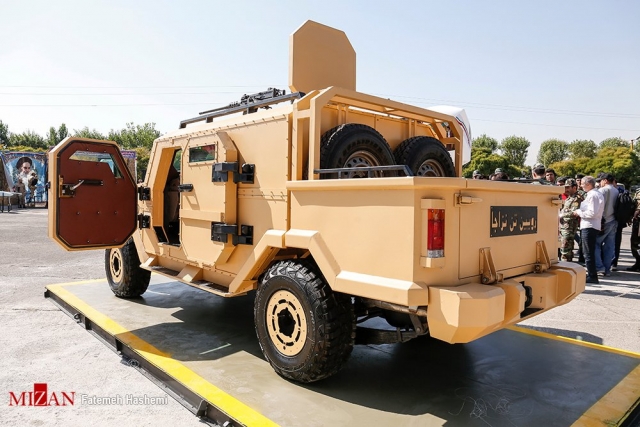
Bullet-proof Personnel Carriers
Unveiled in August, Iran’s Raad (Thunder) advanced 6*6 Mine-Resistant Ambush Protected (MRAP) armored personnel carrier was reportedly developed based on the needs of the country’s armed forces for higher speed, movements in sharp longitudinal or perpendicular slopes and crossing the obstacles. The system is designed to enhance Iran's capabilities in terms of defense, and as a partner to Bavar 373.
The advanced MRAP vehicle is meant for security operations while protecting the passengers against booby-traps and road-side bombs, proportionate to the climate of the country.
According to Iranian Minister of Defense and Logistics of the Armed Forces Brigadier General Amir Hatami, the vehicle also has a fully-integrated personnel-carriers body structure, is bullet-proof and resistant to landmines. It is well-suited for use in asymmetric wars, urban transport and borders outposts.
Raad is the upgraded version of Toofan prototype with a strong engine and more capability to carry weapons and the number of personnel.
Iran also displayed its new Rouintain bullet-proof personnel carrier boasting “high mobility” this month. The light vehicle is said to be resistant to steel core bullets, protecting its passengers.
Heidar-1 Project
Heidar-1 consists of a group of small, network-connected anti-infantry and armor smart unmanned ground vehicles (UGVs). The project was recently unveiled by Islamic Republic of Iran Army Ground Forces (NEZAJA). Prototypes of the UGVs were on display at an Army weapons expo in Tehran this October.
The six-wheeled boxy bots, according to images and videos released by NEZAJA, come in six versions—including two that carry assault rifles mounted to their tops and one that is essentially a mobile anti-tank mine. The vehicles are topped with pairs of ruggedized antennae and small cameras; the assault-rifle equipped versions also appear to have a telescopic optic sensor for weapons aiming.
The network-based “Heydar-1” smart robot is a six-wheel-drive vehicle that is furnished with 360-degree rotating wheels, which reportedly can detect obstacles in its path.
“NEZAJA had an expo in Tehran where it unveiled several concepts, including this small UGV, Heidar-1. It appears to be a proof of concept, and there is no evidence of this UGV taking part in combat,” Samuel Bendett, an adviser at the Center for Naval Analyses, was quoted as saying by c4isrnet.com.
In the video released by Iran, one of the robots driving toward a rough tank-like shape. It explodes, fulfilling the promise of the simulation, and hearkening back to an earlier era of anti-tank warfare.
“This is the first time we have seen Iran unveil such a vehicle,” said Bendett, a fellow in Russia studies at the American Foreign Policy Council. “Equally interesting is their claim that this will be a ‘networked’ system of vehicles that can presumably function in more or less autonomous mode. At this point, however, they are remote-controlled devices.”
In a video demonstration, the rovers are either single-use mines or armed with machine guns. They are shown being used as combined arms with flying multirotor scouts. Whatever the guts of the new rolling rovers, the ability to guide them remotely to targets spotted by drone adds to the range of threats small robots can pose to armored vehicles.
“This Heidair-1UGV may act ... as a kamikaze vehicle that may sneak up on its target much faster given its overall small size,” Bendett said. “We may not see this UGV operate in Iranian Army, but we may see such a vehicle operated by Houthis in their campaign against the Kingdom of Saudi Arabia and its aligned forces.”
Khordad-15 Air Defense System
In June, Iran presented Khordad-15 air defense system that is reportedly capable of detecting stealthy targets at a distance of 85 km, and destroying them within a range of 45 km.
Iranian defense minister claims that the Khordad-15 is capable of detecting fighter jets and combat drones from 150 km away, and of tracking them within a range of 120 km.
“The Khordad 15 uses Sayyad 3 missiles. It can simultaneously detect, intercept and destroy six incoming hostile targets. It can be readied to engage hostile targets in less than five minutes,” Hatami added.
It has been speculated in the western media that Khordad-3 was used in the Iranian downing of US Global Hawk armed drone in June.
“A video released by Iran showed an Islamic Revolutionary Guard Corps unit firing what looked like a single Sayyad-2 from a ‘3rd of Khordad’ anti-aircraft system at night, followed shortly afterward by falling wreckage,” according to a report by Washington Institute.
"They work," said Jeremy Binnie, Middle East and North Africa editor at Jane's Defence Weekly, of Iran's air defenses. The incident "highlights that when the Iranians really make investment, it can really count," he told CNN.
"We knew that with ballistic missiles, but it appears the case with air defenses too."
A couple of days following this incident, Iraq sought technical collaboration from Tehran to develop its own air defense systems. The cooperation will include production, training, logistical support in various fields, including electronic warfare operations, radar operation, optical surveillance, command and control, radar calculations, and software.

Farpad Drone
Farpad hand-launched reconnaissance drone is equipped with autopilot and can take pictures round the clock. The drone is designed for the combat intelligence collection units serving in the mobile offense brigades or rapid reaction squads.
The roughly four-kilogram domestically-manufactured drone can fly as far as 20 kilometers (12 miles) for 45 minutes. It is used in reconnaissance and surveillance missions and is capable of either storing information or transferring data via online connection. Should it come under jamming attacks, the aircraft would return to the base, using its autopilot, reports Iran Daily.
At the Eqtedar 40 Exhibition held in January 2019, Iran presented Kaman-12 drone that can fly at 200kmph for 10 straight hours. It can use an airstrip that is 400 meters long and covers a 1,000km combat radius. The UAV weighs 450 kg and can carry a payload as heavy as 100 kg.
Tehran also displayed Shahed-129 drone that can carry four Sadid smart bombs and can be guided using optical, laser, or infrared equipment. The UAV is capable of flying as far as 2,000 kilometers for 24 hours, refueling only once.
Other drones showcased by the Iranian armed forces at the event are Sa’eqeh-2 drone which can carry four guided bombs, Mohajer-6 drone that can be fitted with Qa’em missiles and RQ-170 UAV.
Portable Jamming System
Tehran also showcased a new portable jamming system that can detect and disrupt various types of hostile multirotor drones in October.
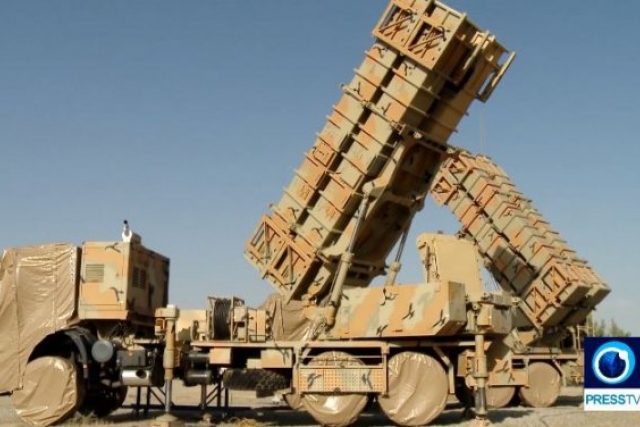
Guidance and Control System
NEZAJA recently unveiled guidance and control kits meant to give Labaik-1 missiles pin-point accuracy, writes Iran Military.
Falaq radar system
Iran’s homegrown advanced radar system, the Falaq, also made its first public debut in August. Based on Gamma surveillance radars, Falaq is capable of tracking stealth aircraft, ballistic miissiles, cruise missiles and UAVs within a range of 400 km, according to some reports.
Helicopter-borne missiles
Tehran announced it developed three new helicopter-borne missiles- Heidar, Qamar-e Bani Hashem and Dehlaviyeh, in April 2019.
Heidar missile is a precision air-to-ground missile that can be used against armored and ground-based targets, including enemy gatherings. It can pierce its target as deep as one meter and be fitted with various seeker systems that would enable its deployment in different weather conditions.
The Qamar-e Bani Hashem missile can be used against the same targets, but can also function as an air-to-air projectile, lock onto its targets upon release, and be deployed in the dark.
The latest Dehlaviyeh missile is a laser-guided air-to-ground projectile, which is similarly suitable for deployment against armored targets and is low in weight. It can pierce targets as deep as 1.20 meters.
“The missiles are now in the testing stage and will be mass-produced soon to be mounted on combat helicopters,” PressTV reported, citing Fars News Agency in the same month.
In February, Iran exhibited Dezful surface-to-surface missile, which is a version of the Zolfaghar missile that has a 700km range and a 450-kg warhead. The Dezful reportedly has a range of 1,000 kilometers and a warhead weighing nearly half a ton.
In the same month, Iran unveiled is new “underground missile production plant,” and tested its Hoveizeh long-range cruise missile.
Qassed-3 missile that is 5.15 meters in length, can carry a 453-kilogram warhead, and has a range of 100 km was displayed in January. It has a microjet engine, which enables it to be fired at a speed of 600 kmph toward targets, and is guided using a seeker head.
Akhgar television-guided missile having a range of 30 km and speed of 600kmph; Shahin anti-missile projectile that can jam radars and enemy electronic equipment, were also showcased.
At a military parade held by Iran late September, Iran presented a number of its missiles. Iran “showcased the missiles that can travel more than 1,250 miles, bringing it in range of US bases in the region and arch-foe Israel,” wrote Telegraph.
